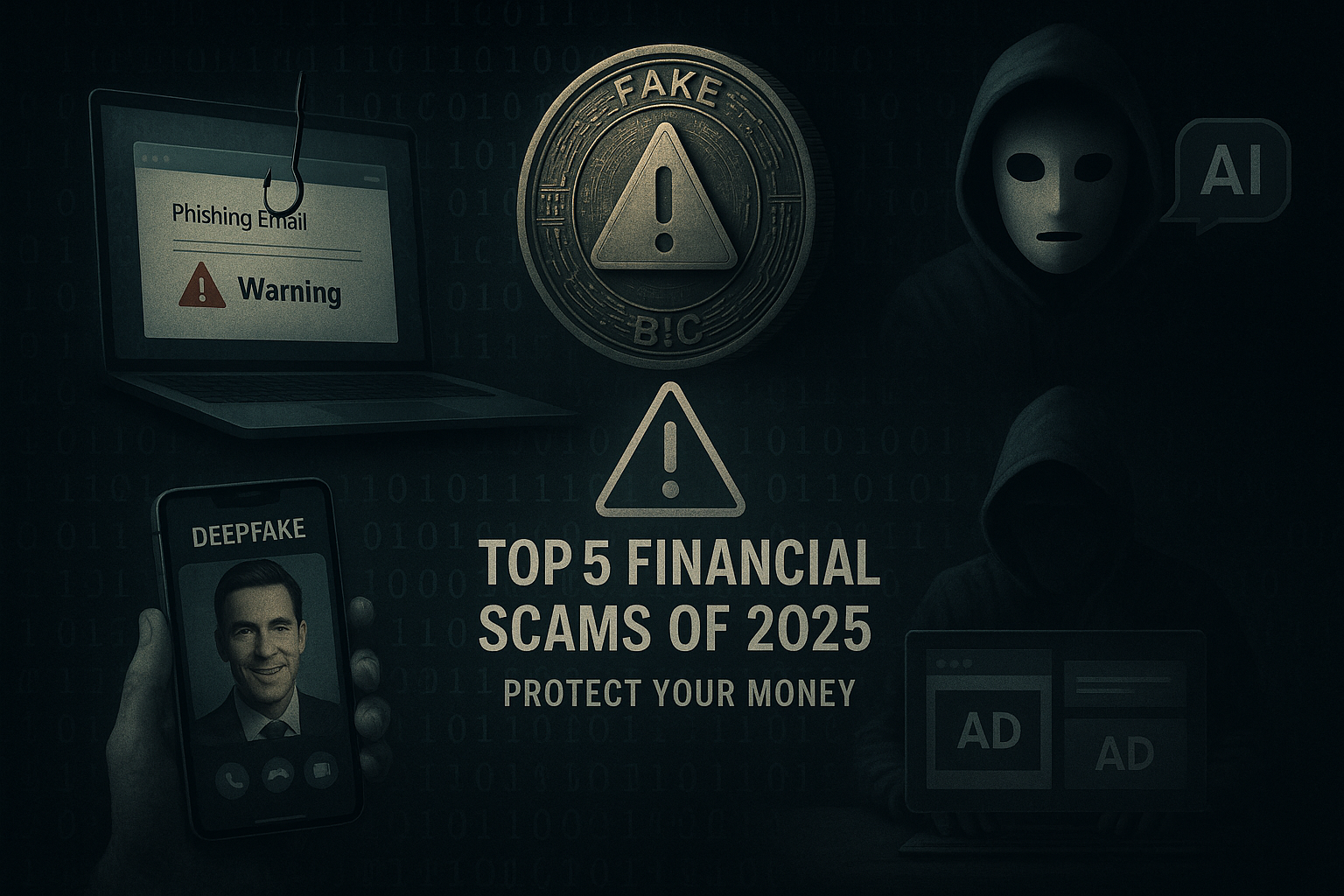
AI-Driven Fraud Detection: Financial Sector's New Frontier in Cybersecurity
Discover how AI is revolutionizing fraud detection in the financial sector. Learn how banks use real-time machine learning to fight evolving threats like deepfakes and synthetic identities—and what that means for the future of cybersecurity.

Fortifying Your Financial Portfolio: Cybersecurity Best Practices for Investors
Protect your investments from cyber threats. Learn essential cybersecurity best practices every investor should follow to safeguard their financial portfolio.

Quantum Computing Threats: Is Your Financial Data Ready for the Future?
Quantum computing is no longer science fiction—it’s a real threat to current cybersecurity standards. This article explores how emerging quantum technology could crack today’s encryption methods and what steps you can take now to protect your financial data before it's too late.

Dark Web Economics: How Cybercriminals Monetize Your Financial Data
Discover how cybercriminals profit from stolen financial data on the dark web—and what steps you can take to protect your digital wealth.

Top 5 Financial Scams to Watch Out for in 2025 (and How to Protect Your Money)
The world lost over $1 trillion to scammers in 2024 alone. Unfortunately, 2025 is poised to be even riskier as fraudsters adopt new technology like AI to craft more convincing scams. Today's scams are more sophisticated than ever, from fake investment schemes to deepfake impersonations. The good news is that you can stay one step ahead with some knowledge and vigilance. In this post, we'll break down the top 5 financial scams trending in 2025 – including AI-powered phishing, crypto fraud, and deepfake impostors – and give you beginner-friendly tips to protect your money

Cryptojacking: How Hackers Are Mining Crypto with Your Devices (and How to Stop Them)
Cryptojacking is a covert cybercrime in which malicious actors hijack a device's computational power to mine cryptocurrencies without the owner's consent. Unlike ransomware or other overt forms of hacking, cryptojacking often operates invisibly in the background, allowing the hacker to siphon resources continuously over time. By embedding malicious scripts in websites, software, or apps, cryptojackers exploit unsuspecting users, turning their devices into unwilling mining tools for digital currencies like Bitcoin or Monero

The Hidden Costs of Cyberattacks: How a Data Breach Can Drain Your Finances
In today's hyperconnected digital landscape, the specter of cyberattacks looms large over businesses of all sizes. What was once the domain of large corporations and government entities has become a pervasive threat, with even small companies falling prey to sophisticated hackers. The financial repercussions of a data breach are severe, extending far beyond the immediate theft of information. The actual cost, from legal penalties to the erosion of brand trust, can cripple a company's financial stability, making cyberattacks one of the most expensive risks modern organizations face.

The Rise of Ransomware 2.0: How to Fortify Your Finance Fortress
Ransomware has evolved dramatically, posing a growing threat to financial institutions worldwide. No longer a crude attack that only locks files, today's ransomware has become a sophisticated weapon of cyber extortion. As financial institutions digitize their services and store massive amounts of sensitive customer data, they become increasingly attractive targets for cybercriminals. The evolution of ransomware into Ransomware 2.0 represents a new chapter in cybercrime and a pivotal moment for the finance industry. It demands an equally evolved and fortified response to protect the core of the global economy.

The Growing Need for Cybersecurity in Everyday Jobs: What You Should Know
Cybersecurity has evolved from a niche responsibility of IT professionals into a fundamental necessity for all employees, regardless of their technical background. In today's interconnected world, every device, email, or network we interact with can be an entry point for cybercriminals. As data becomes more valuable, the stakes for businesses and individuals grow exponentially

The New Frontier of Identity Theft: Why Multifactor Authentication Isn't Enough
In today's hyper-connected world, identity theft has become a sophisticated menace beyond simple password guessing. The modern threat landscape is riddled with opportunistic cybercriminals armed with tools that leverage artificial intelligence, social engineering, and even deep fake technology. Multifactor Authentication (MFA) was once heralded as a panacea for online security. Yet, recently, it has become clear that even this once-reliable protection method is no longer impenetrable. The shifting tactics of cyber adversaries necessitate a more comprehensive approach to safeguarding personal and corporate identities.

The Hidden Costs of Financial Data Breaches: How Cybersecurity Failures Can Drain Your Savings
In today's increasingly digital world, the threat of financial data breaches looms more significant than ever. As we integrate technology into nearly every aspect of our lives, the risk of cybercriminals infiltrating our financial systems grows exponentially. Data breaches have become common, with significant incidents frequently making headlines. However, while many know the immediate implications—such as fraudulent transactions and identity theft—the hidden costs of these breaches often go unnoticed. From long-term financial strain to emotional and psychological repercussions, a data breach can have far-reaching effects beyond the initial attack.

The Rising Tide of Hacktivism: Navigating Ideological Cyber Threats in Finance
In today's digital landscape, the convergence of cybersecurity threats and ideological warfare is becoming more pronounced, particularly in the financial sector. Hacktivism, a portmanteau of hacking and activism, represents a growing cyber threat that intertwines political ideology with sophisticated cybercrime. For financial institutions, this fusion has created a perfect storm—where not only are their systems at risk but their very role in global economics and social power structures is called into question. As hacktivists increasingly target banks and financial systems, these institutions must navigate an ever-evolving landscape of ideological cyber threats.



